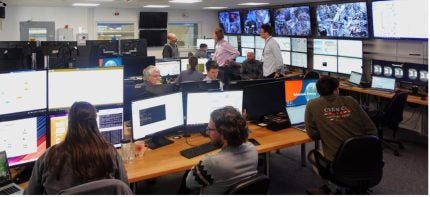
UK-based Tokamak Energy plans to use a new digital twin computer software programme, SOPHIA, for tests using its ST40 fusion device when it resumes plasma operations. The ST40 will mirror experiments simulated virtually in the modelling programme SOPHIA to improve efficiency and accelerate progress on the company’s roadmap. Tokamak Energy, founded in 2009 as a spin-off from UK Atomic Energy Authority, aims to demonstrate net power from its pilot plant in the mid-2030s.
Using SOPHIA, Tokamak Energy scientists and engineers will get maximum gains from every experiment without needing to test multiple scenarios in the physical machine, removing human error and fast-tracking results.
The ST40 is the first privately-owned fusion machine to achieve a plasma temperature of 100 million degrees Celsius, which is the threshold for commercial fusion. In 2024, Tokamak Energy is seeking to break the record it holds for highest triple product, a widely recognised industry measure of plasma density, temperature and confinement.
SOPHIA, designed in-house at Tokamak Energy, was first trialled in late 2023 to help Tokamak Energy understand and develop high-performance diverted plasma scenarios in its high field spherical tokamak. It has since been upgraded and will be fully integrated into ST40 plasma operations for 2024. It can be programmed to run multiple simulations at once and predicted results have been proven to mirror actual experiments, ensuring ST40 tests do not breach machine limits and cause plasma disruptions. SOPHIA is also used for team training and is expected to be developed further for future devices.
Dr Mike Porton, Tokamak Energy’s Chief Engineer, said: “The world desperately needs a secure supply of clean and affordable energy to meet rising demand and address climate change. Our new tokamak simulator SOPHIA will maximise gains from experimental goals, reduce risk and help perfect plasma scenarios quicker than previously thought possible.”
He added: “Successful experiments tested virtually by SOPHIA will go forward to ST40 for real, producing measurable, publishable, verifiable, physical results to accelerate our research and development productivity. It is a huge breakthrough in cutting timelines on Tokamak Energy’s mission to validate power plant designs and deliver commercial fusion in the 2030s.”
Tokamak Energy in February 2023 revealed plans to build a prototype spherical tokamak, the ST80-HTS, at the UKAEA’s Culham Campus, near Oxford by 2026. This would “demonstrate the full potential of high temperature superconducting magnets” and to inform the design of its fusion pilot plant, ST-E1, which is slated to demonstrate the capability to deliver electricity – producing up to 200 MW of net electrical power – in the early 2030s. That would then be followed by the roll-out of 500 MW commercial fusion plants “in the mid-2030s”.
Tokamak Energy recently signed an agreement with the US Department of Energy (DOE) as part of the US bold decadal vision for delivering commercial fusion. The DOE’s $46m milestone-based fusion development programme aims to support private companies in bringing fusion toward technical and commercial viability. Selected companies will team with US national laboratories, universities, and others to address major technical and commercialisation milestones for the successful design of a fusion pilot plant.






